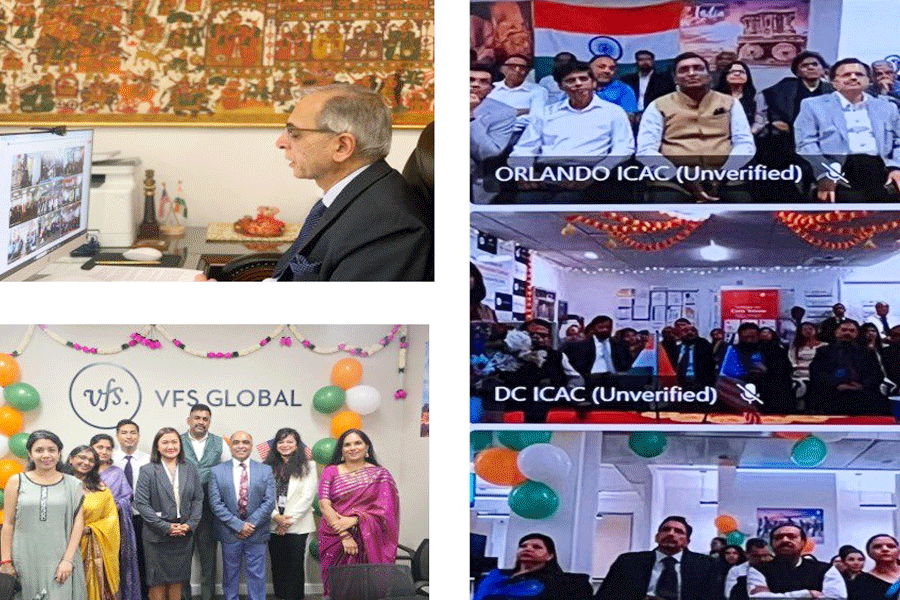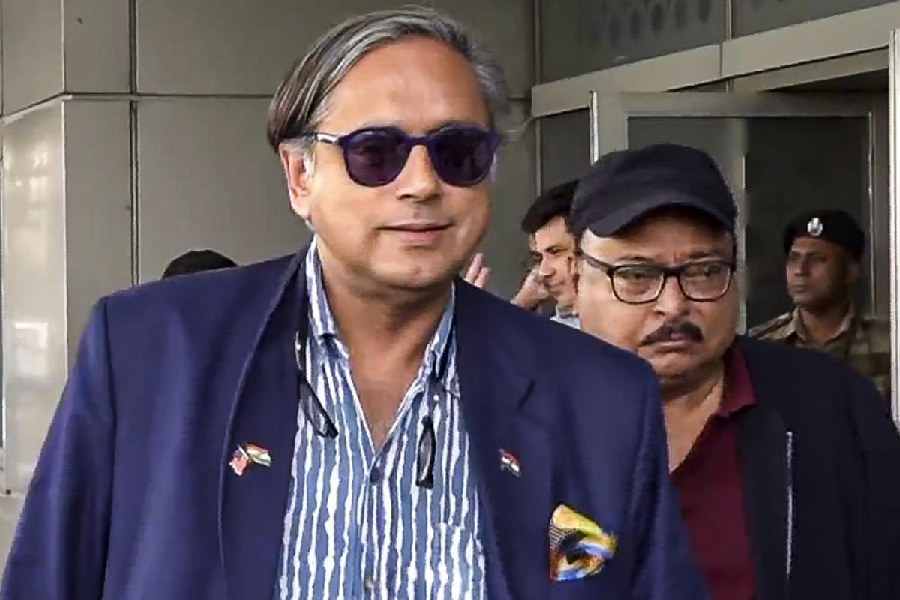
Vibha Lal (centre) along with her students at her Bank Road residence in Patna on Monday. Telegraph picture
One of the rooms of Madhubani painter Vibha Lal's Bank Road home was buzzing with activity on Monday, occupied with a motley group of students all eager to learn the nuances of Madhubani art.
Be it parallel lines or traditional designs and motifs, the students were brimming with questions about everything.
This particular group of 15 was learning traditional painting from Lal, a state awardee in Madhubani painting, under the Guru Shishya Parampara (teacher-taught tradition) Yojana of the Union ministry of textiles at Lal's house from August to December.
'No art can be learnt in a day. A lot of hard work has to be put in. Only if one spends a considerable amount of time under the tutelage of his/her mentor, can it help him/her hone skills,' said Vibha, who has an experience of 15 years.
Assistant director of development commissioner (handicraft) Radhakant Mishra said: 'Under the Guru Shishya Parampara Yojana, amateur artists can learn the nuances of various forms of handicraft by spending extensive amount of time at the gurus' (experts in respective handicraft) houses for around three to four months. This is the best part of this scheme. This year, four shilp-gurus are teaching budding artists at their homes in Patna - three are taking classes in Madhubani art, while one in jute craft,' adding that students have to spend at least six hours with the gurus everyday to pick up the nuances under the scheme.
'The development commissioner (handicraft), Government of India, selects groups, each comprising a maximum of 15 candidates, once every year with the help of their offices in many states and allocates each of those a shilp-guru. Certain criteria for selection of trainees are basic knowledge of the handicraft, residence within a radius of 5km and age between 18 and 40 years,' added Mishra.
According to Mishra, the scheme was aimed at the transfer of traditional knowledge from master craftsmen to the new generation ensuring sustenance of the craft. 'New semi-skilled artisans are trained by master craftspersons. While the guru (master trainer), who is a state awardee, is paid a monthly remuneration of Rs 25,000 per group, a national awardee gets Rs 30,000 monthly. Each trainee is paid Rs 7,200 monthly. Moreover, each trainee gets Rs 1,000 per month as compensation for wastage of raw material,' said Mishra.
The trainees at Lal's house seemed excited. 'I noticed something unique about this art - the practice of darkening outlines with black even before colouring the figures,' said Preeti Kumari, one of the students engrossed in the painting work Lal assigned to her.
Simran Kumari, another student of Lal, said: 'Madhubani painting has fascinated me since a long time. I am privileged to get a chance to learn this art form from an expert. Spending more time with my mentor will clear all my doubts.'










